10 Tips on Discovering Namibia’s Wildlife: How to See the Animals?

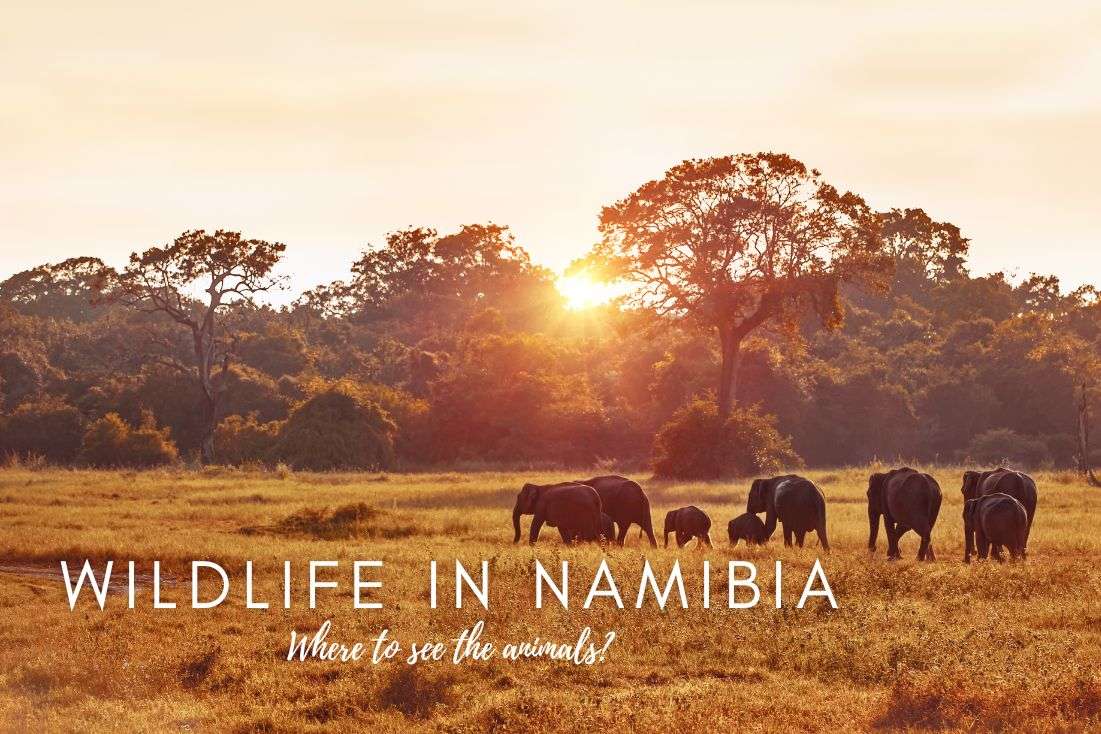
The animals in Namibia aren’t just something you stare at from your car at the safari parks. Hold on to your safari hat because Namibia is about to shatter your preconceptions of what wildlife in Africa is all about.
You’re just as likely to see a giraffe or hippo crossing the road in Namibia as you are running into a squirrel or pigeon in your hometown. Animals roam so wild and free in Namibia that the most important self-driving tip is related to them!
It’s not just typical Namibia safari animals in nature reserves, you will have random wildlife encounters on the road, in the distance, and even right by your hotel.
In Namibia, you'll find more than just the usual animal suspects—we're talking about the cool, the quirky, and the downright dangerous.
1. Does Namibia have wildlife?
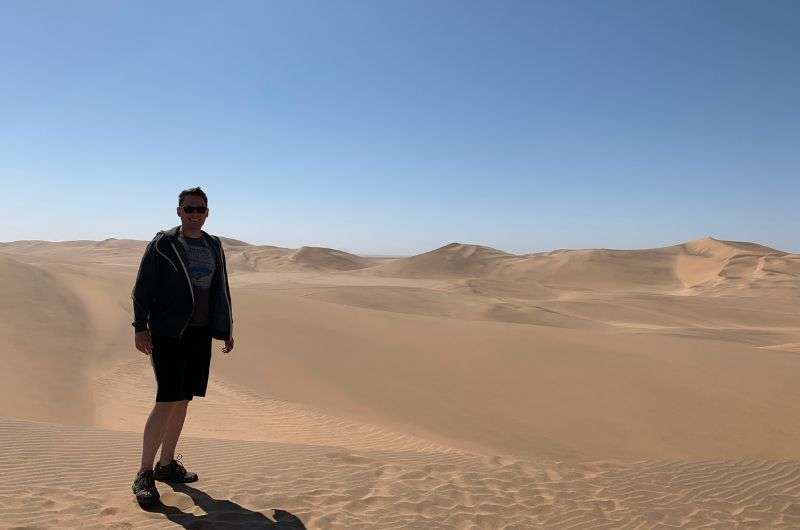
Where is everybody?
Yes! And thank the universe for the animals, because otherwise we'd just be a bunch of tourists wandering around in the middle of nowhere, staring at sand dunes and wondering what the heck we're doing here. More than half of Namibia’s best tourist attractions exist solely because of the wildlife in this country.
Lions, hyenas, hippos, zebras, vultures, snakes, seals, sharks… they’re all a huge part of what makes Namibia worth visiting. Some animals in Namibia I’m sure you’ve never even heard of, plus some that you can’t see in any other country.
So, yeah, if you took the wildlife away, Namibia would just be a glorified sandbox. The desert might be beautiful for a while, but after a few hours of non-stop sand, you'll be praying for a herd of wildebeest to come stampeding by to break up the monotony.
2. Where to see wildlife in Namibia
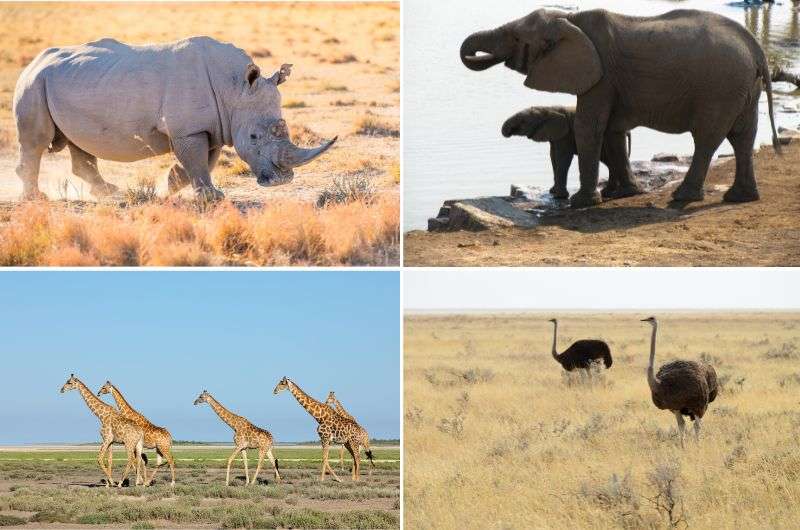
Etosha National Park will make you feel like you're in the Lion King
Everywhere. No doubt you’ll see wildlife out in the wild when you’re driving from place to place, on a desert walk, or maybe even out the window of your carefully chosen accommodation.
But I’m sure you want to be more intentional about spotting wildlife in Namibia, not just leaving it up to chance.
Namibia wildlife safaris are the number 1 spot to see the big mammals you’re probably hoping for the most. Etosha National Park Safari is the top safari in the country, and you’ll be happy to learn that 4 of the Big 5 live there. Here are my 9 tips on planning your Etosha NP visit. Other options include Namib-Naufluft National Park and Nkasa Lupala National Park.
You’ll certainly even see big mammals in Namibia in places where the main attraction is something else—there are leopards, zebras and kudus in Fish River Canyon, and you’re bound to get that shot of an oryx or ostrich against the sand dunes of Sossusvlei.
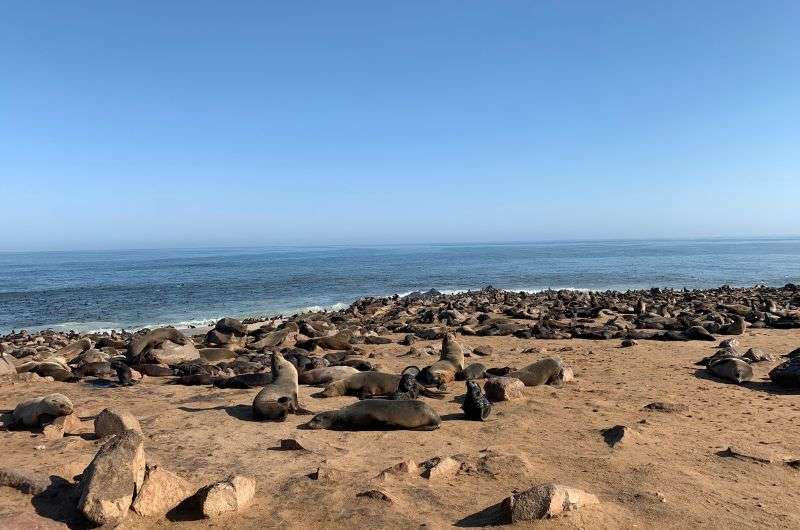
A flock of seals in Cape Cross
In Namibia’s adventure capital, Swakopmund, you’ll get child, thrills, and snakes and lizards out in the wild on the epic Tommy’s Living Desert Tour (and we even saw some on our quad bike ride!). Hundreds of Cape fur seals (and their stench) await you at nearby Cape Cross.
Hippos need a lot more water than some other species, so a water hole here and there isn’t going to cut it for them. To see the big (and dangerous) cuties, you’ll need to head out to the Caprivi Strip.
If you’re into snakes and other critters, like yours truly, and you aren’t satisfied with the thought of randomly running into one, check out Swakopmund’s Snake Park.
Some animals need extra protection from the ultimate predator—the human. Places like Cheetah Conservation Fund allow you to help with conservation efforts. They let tourists stay in several accommodation options, like the coveted Babson House, where you can see cheetahs from your terrace!
I have lots more information about all of these places in Namibia in a separate article. You can read about everything Swakopmund-related here.
3. Are the Big Five in Namibia?
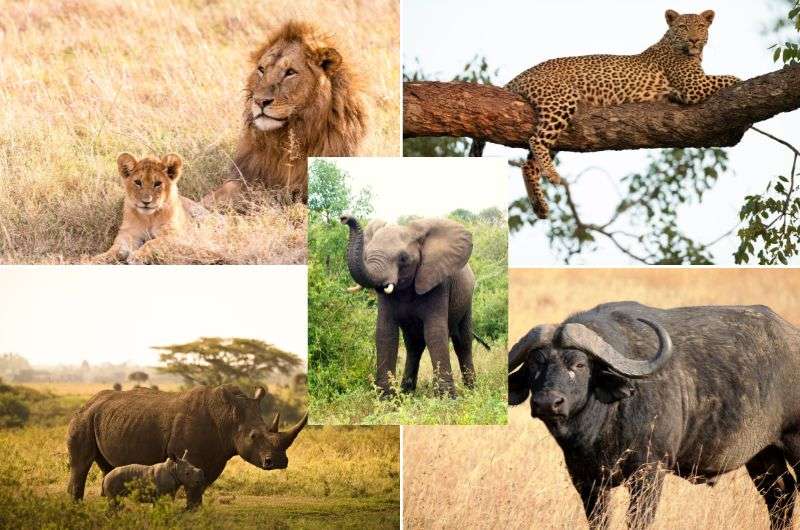
The big 5!
The big 5 refers to the lion, leopard, rhino, elephant and African Cape buffalo—and Namibia is home to all of them.
But hold up... If a giraffe or hippo is bigger than these so-called 'Big Five,' then what the heck does 'Big Five' even mean? Fun fact: The term originally referred to the animals that were the most difficult to hunt. No idea why the term stuck even now that hunting is considered abominable and utterly redneck, but the prestigious title now describes the top five most sought-after animals for wildlife viewing in Africa.
You’ll have to do a bit of hunting around (with your eyes, of course!) to spot all the Big Five in Namibia, since they like to play hard to get. Even in the country’s premier safari destination, Etosha National Park, you won’t spot all five.
Luckily, you don’t need to go far to complete your list: Just head over to the nearby Waterberg Plateau or Caprivi Strip, and voila—there's your buffalo!
4. Which Namibia mammals can I spot?
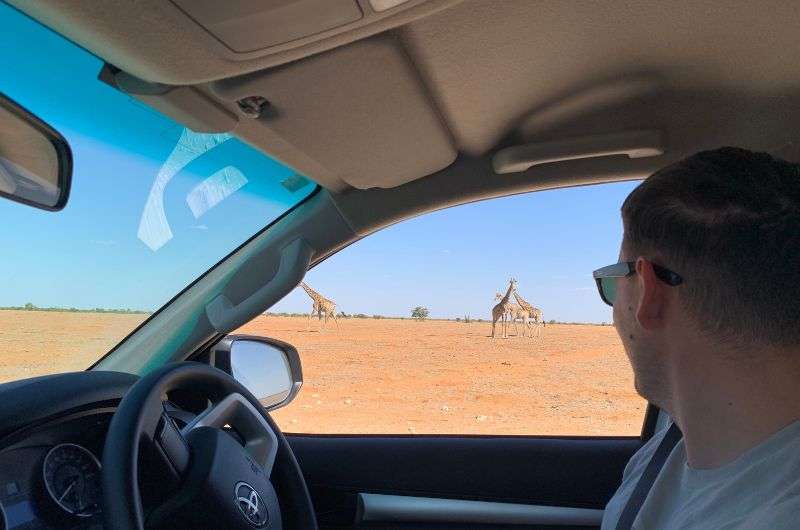
Giraffes in the distance are a much better experience than a warthog up close... too close
It is impossible to mention all of Namibia’s mammals here, because it would be such a ginormous list. Etosha National Park alone harbors 114 mammal species!
Sometimes, all these mammals in Namibia can cause not only jaws to drop, but parts of your car as well! We got way too up close and personal with a warthog in a car accident where the score ended up being Pig 0 – Toyota Hilux 0 – Jan 1. Why? Because I took my own advice and got good insurance coverage (and so should you! Read all of my Namibia my driving tips).
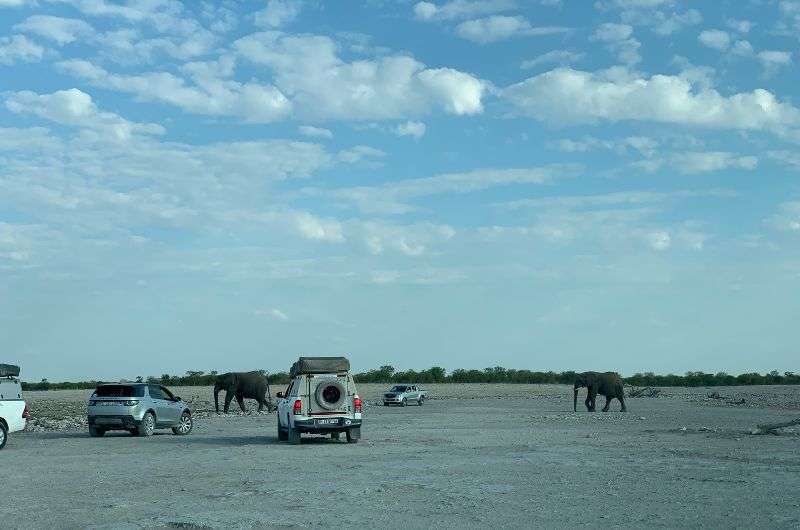
In Etosha National Park, elephants and other animals always have the right of way
So, I’ll just list some cool Namibia mammals until the paragraph gets too long, but it won’t be exhaustive: elephants, lions, hippos, giraffes, leopards, zebras, cheetahs, rhinos, wild dogs, wildebeest, ostriches, seals, baboons, wild dogs, warthogs, meerkats, mongoose, civets, foxes, servals and antelope.
There are also so many antelope species that most of their names sound like I just stung random letters together: kudu, dik-dik, duiker, tsessebe, sitatunga, grysbok, gemsbok and about 20 others.
You haven’t been to Namibia until you have 500 photos of this guy:
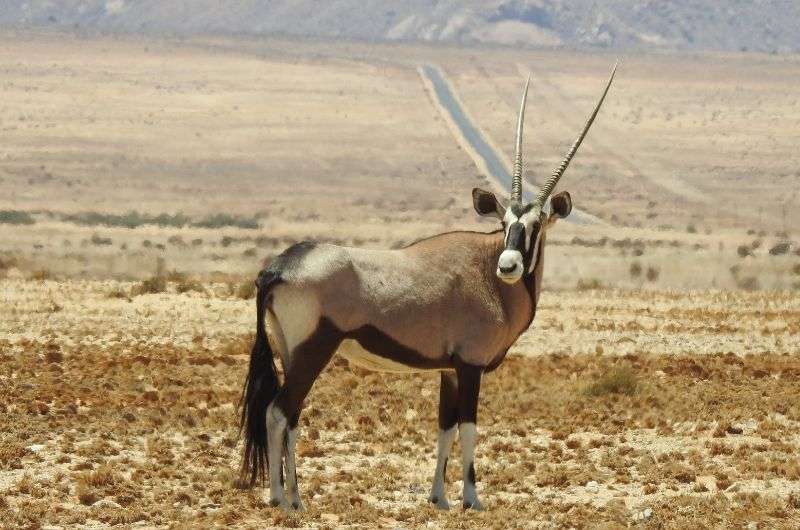
The gemsbok aka South African oryx is Namibia’s national animal
5. Are snakes common in Namibia?
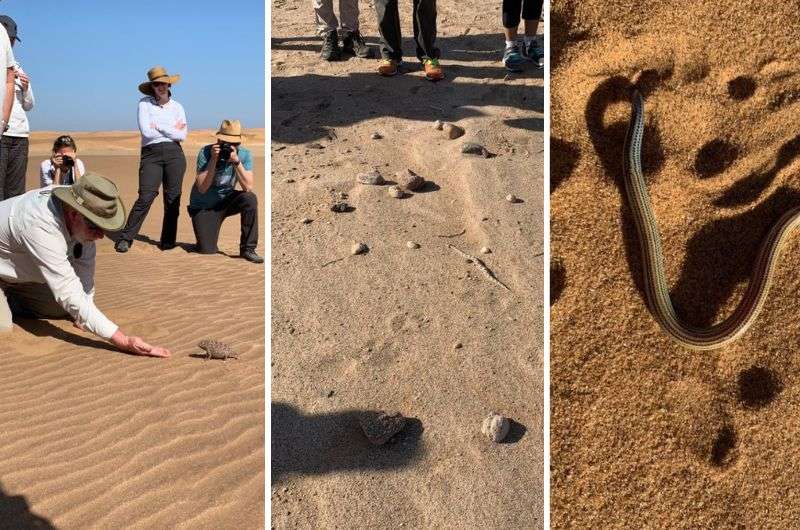
If you want to meet snakes in Namibia, not die and learn something about them at the same time, I recommend Tommy’s Living Desert Tour in Swakopmund
I feel like you want me to say no to this one, but yes, there are over 80 types of snakes in Namibia. But don’t worry, “only” 11 can kill you!
Adders, cobras, mambas—you name it, Namibia’s got it! And I love that, because you know how most people get giddy around puppies? That’s how I act when I see snakes.
Namibia snakes aren’t picky when it comes to where you can find them—there are species that like the sand, some prefer bushy or forested areas (and suburban gardens), some literally hang out in trees (don’t go pulling on vines!), and some think that human houses are a great place to catch rodents.
So to answer your question: There is no place in Namibia where you can’t find snakes. Luckily, they rarely target humans just for fun and only attack when they feel threatened. The first choice of Namibia snakes is always to flee, not to see if they can take you on despite your size.
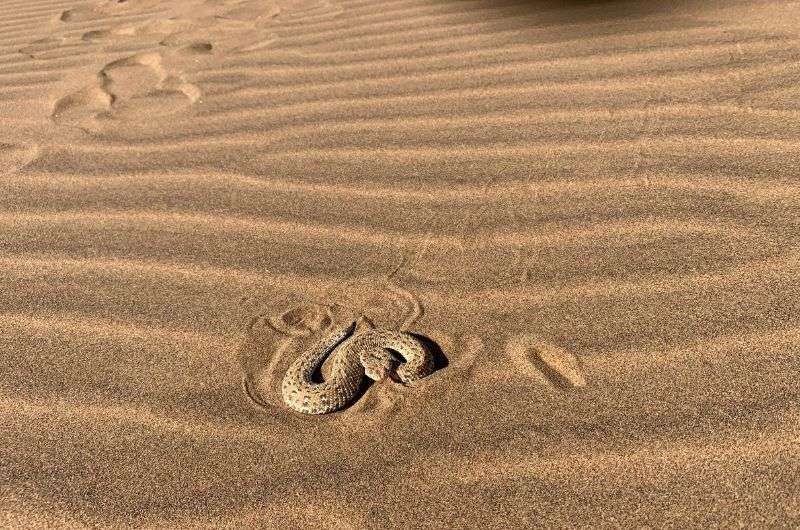
We met this sand viper during our ATV trip in the desert
Even my personal favorite serpent, the Puff Adder, who slithers around in a bad mood most of its life, would rather leave while mumbling expletives to itself than take a bite of you. Still, since it is highly venomous and easy to aggravate, you don’t want to see its puffed-up body in the wild.
A little less optimistically, some of Africa’s deadliest snakes also live in Namibia. The Boomslang? Check. The Carpet Viper? Yep. The surprisingly not black Black Mamba? Yes, Black Mambas, too.
Be ready to witness some type of snake while in Namibia, it’s hard not to. We saw some wiggling around in the sand on our quad biking adventure, for example. But no dangerous encounters.
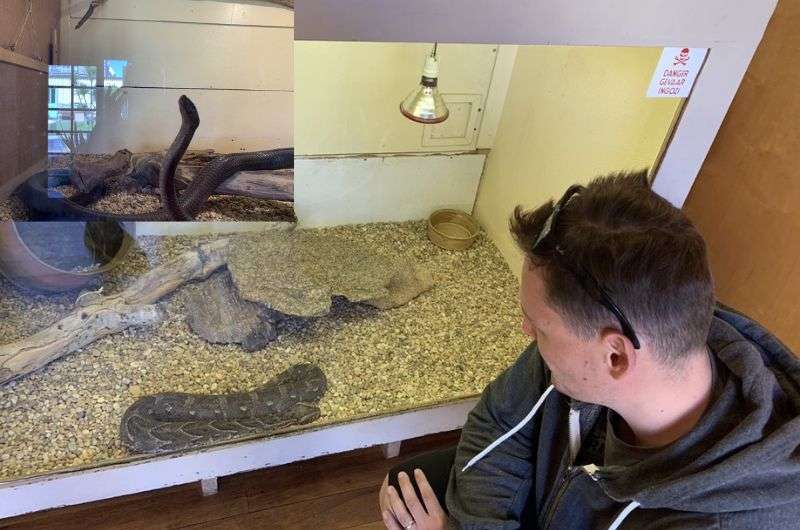
Hello, my lovelies (at Snake Park in Swakopmund)
I was able to cuddle up real close to a Puff Adder and a bunch of others I wouldn’t want to stumble upon in the wild in Swakopmund’s Snake Park. It may not be everyone’s cup of tea, but for me, it was an experience I won’t forget!
6. Are there big cats in Namibia?
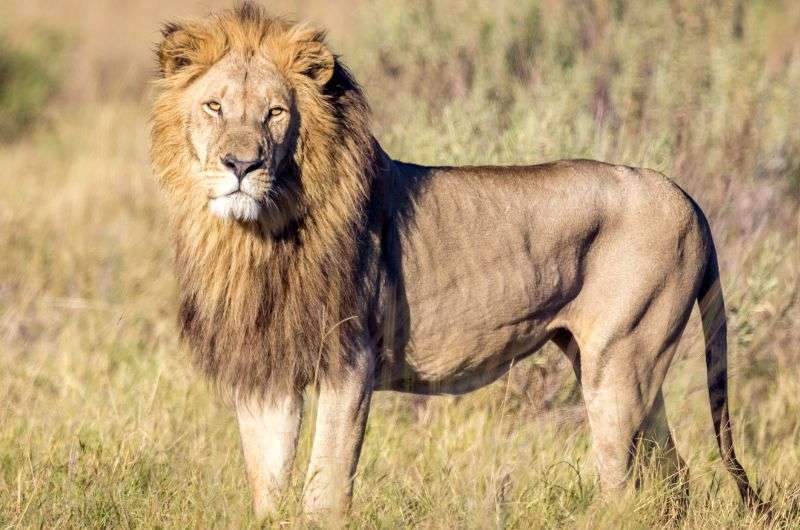
Is a lion big enough for you?
If you’re not from Africa, you’ll be gobsmacked by many a creature you meet on your Namibia trip. Personally, I was most impressed by the ostriches, but if you're looking for something with a little more bite, Namibia's big cats are sure to make your jaw drop.
First there’s the lion, the biggest and laziest of them all. Most lions in Namibia can be found napping in Etosha National Park. Free-roaming lions can be found in the Caprivi Strip and along the Skeleton Coast, where they’ve learned to enjoy a nice snack in the form of fur seals, flamingos and cormorants. Don’t let their docile demeaner fool you—they may not be the best hunters, but they're still kings of the desert—and you suck at running in the sand.
But what about tigers?! There are no tigers in Africa. You’ll need to go to Asia for these big fellas. India has the most responsible wildlife reserves where you can see tigers in the wild.
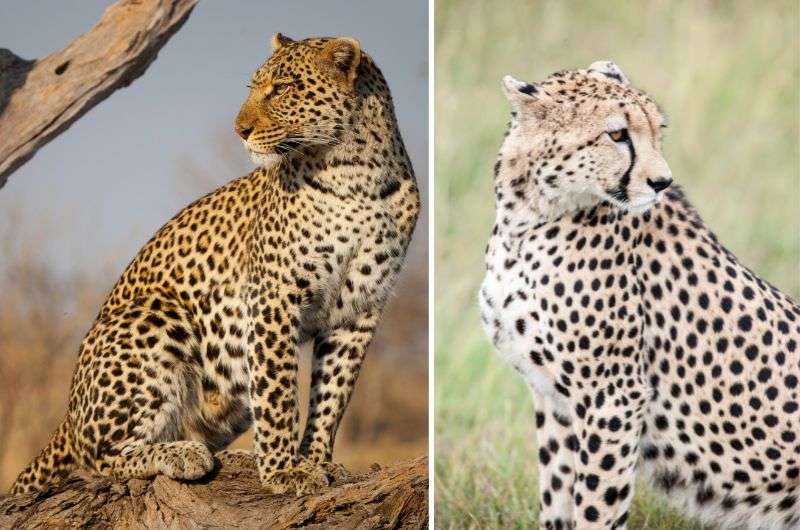
The leopard is on the left, the cheetah is on the right. You're welcome!
The leopard is notoriously difficult to spot, because it likes to hang out alone and is mostly nocturnal. You’ll get chills down your spine if you manage to catch a glimpse of one, not just because they are some of the most fashionable big cats in the world. Leopards are also the ultimate hunters—stalking and pouncing is their thing. If you happen to be staying at a luxury campsite in the more remote areas of Namibia and you hear someone with a rasping cough approaching, DON’T exit your tent to offer cough medicine.
Namibia can also flex about having the largest remaining cheetah population in the world, and not just at the Cheetah parks in Namibia. Everyone knows that cheetahs are fast—running in short bursts of 105 km/h (65 mph) when capturing their prey. But did you know that it can survive without water? All they need is the moisture from their prey and they’re good.
7. Tell me about the cheetah parks in Namibia
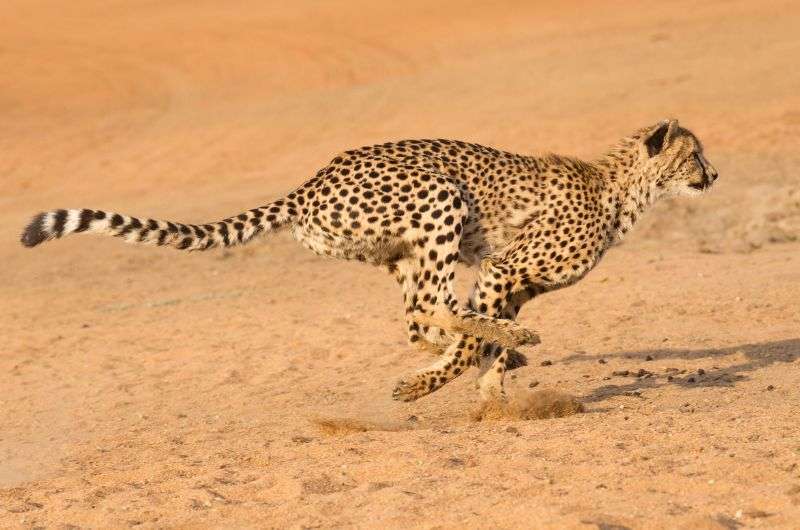
These cats are fast and super cool, but unfortunately there are fewer and fewer of them due to poaching. I hate humans.
There are several cheetah parks in Namibia, namely the Cheetah Conservation Fund overlooking the Waterberg Plateau. They do excellent work for the protection and education about the spotty animals.
The Cheetah Conservation isn’t just a cheetah park, you’ll also run into other species that live on the Waterberg Plateau. You’ll certainly want to visit the Research and Education Centre to learn about what the conservation fund does. Did you know they provide livestock with security in order to protect cheetahs from getting shot? Those big dogs would scare even me away from your goats!
You can even see cheetahs right from the veranda of the Babson House!
You can literally watch cheetahs from your veranda at the Babson House (part of the Cheetah Conservation Fund). The Cheetah Fund actually introduces this place as “for those who wish to experience the world of CCF at the next level”, so you know you need to go.
Always make sure that you are supporting renowned conservation sanctuaries and not shady businesses when planning a visit to any kind of sanctuary. Some aren’t as altruistic as others.
8. What are the most dangerous animals in Namibia?
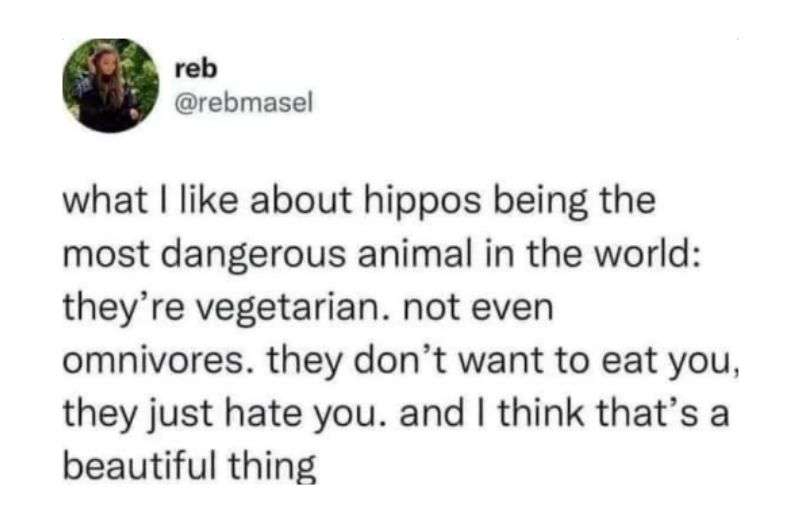
Hippos aren’t strictly vegetarian and have been known to snack on meat, so don’t get in their way!
There is one mighty creature that often flies under the radar—the mosquito. In Namibia, they carry diseases like malaria and dengue fever, which both suck hard if contracted and even harder if left untreated.
Do your research on malaria beforehand, but you’ll always need to stock up on long sleeves and mosquito repellent, since you can get dengue fever throughout the country and there is no vaccine for it.
Now hold up—can we take a moment to stop and think about how some of the deadliest animals in Namibia don’t even eat meat? Honestly, it's like watching a fierce lioness choose a kale salad over a fresh kill.
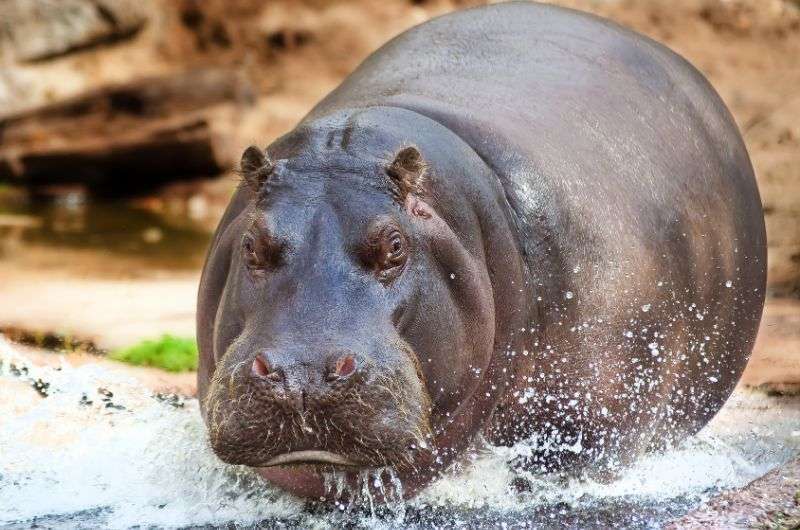
You don't want to mess with this big guy
Hippos need over 35 kg (80 lbs) of grass each day to sustain themselves and they waddle around looking like a cute, hairless stuffed animal. But they kill 500 humans each year (in Africa). Compare that to the less than 100 deaths caused by lions, and you know who not to mess with. Hippos run faster than you, are very territorial, and simply don’t like to be messed with.
Similarly, elephants, rhinos, and African buffalos can turn into aggressive vegetarians if they feel threatened. Then they are quick to show you they’ve had enough of your nonsense and are ready to take you down faster than you can say ‘salad fork’!
Of the meat-eaters, you might be interested to know that there are 10 shark species—including the great white!—that live in the waters off Namibia’s shores. As scary as that sounds, shark attacks are rare and mostly happen when you look too much like a seal.
Tip: Have you read about my South African cage diving experience? I loved and hated it all at the same time.
9. What is the national animal of Namibia?
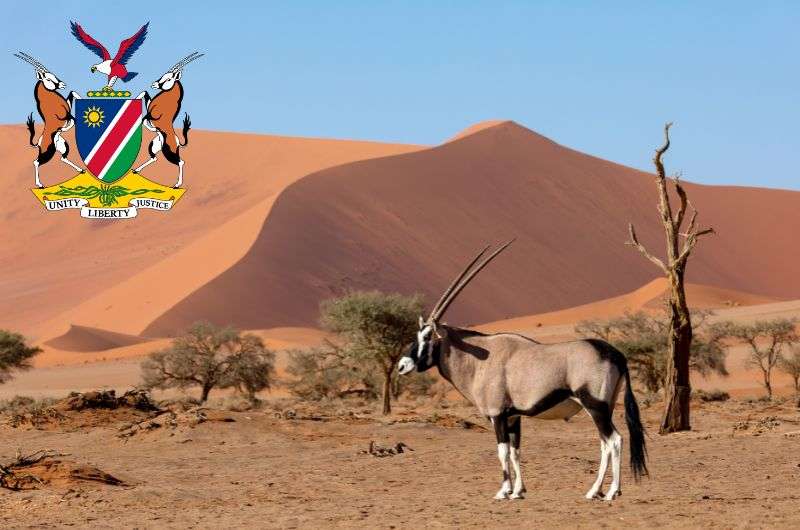
The oryx is also on Namibia’s coat of arms
The oryx, or as the locals call it, the gemsbok, is Namibia's national animal. It's a fancy antelope that's adapted to the harsh conditions of the Namib Desert—it barely needs any water to survive.
With impressive horns that look like they could double as a coat rack, the oryx looks real cool when you see it on the horizon or against the orange sand dunes of Namibia.
10. Can you recommend the top Namibia wildlife safari?
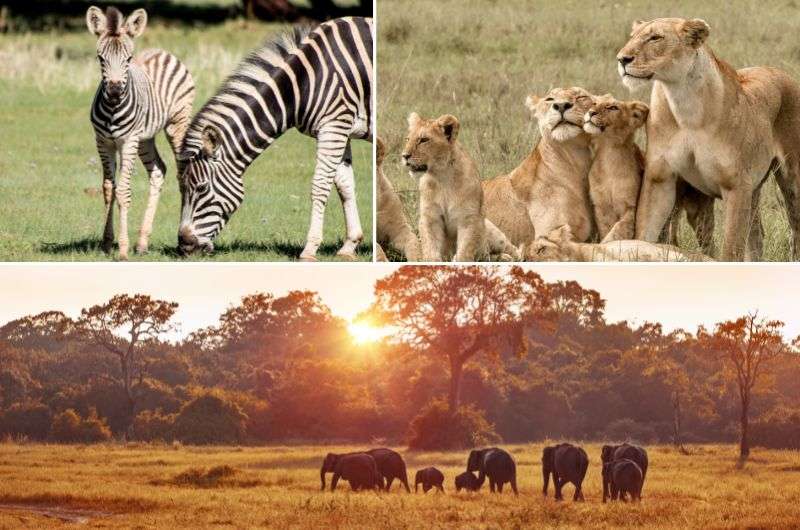
In Etosha National Park, It’s like National Geographic but you’re part of the show!
Even though there are 26 national parks and game reserves in Namibia, the most famous one—it’s a must-visit—is Etosha National Park Safari with over 100 mammals. These include the most sought-after safari animals like giraffes, elephants, zebras and lions. Sorry, no buffalos, but you can see those a little ways away (by Namibia standards, anyway) in the Waterberg Plateau or Caprivi Strip.
You also won’t bump into hippos at Etosha NP, because there simply isn’t enough water in the area to keep them happy. The Caprivi Strip is your best bet to find hippos.
Tip: I have a whole guide on how to visit Etosha National Park and see some of the most incredible Namibia safari animals without ever leaving your car!
Remember you don’t need to go to a safari in order to see wildlife in Namibia—the animals roam free throughout the country. It’s not just the zebras and ostriches by the road and flamingos in the bay (like in Swakopmund), you can literally stay at your guesthouse, watching cheetahs!
Now that’s a massive value proposition from Namibia right there!
Ijaba Lodge at Buschfeld is the best accommodation outside of Etosha NP safari
We were incredibly happy with our stays at the Ijaba Lodge at Buschfeld near Etosha NP, but you will probably see a snake or two while there! Don't worry, they're more afraid of you than you are of them!
At the oasis-like Burgsdorf Guest Farm, you can actually have your dinner while spotting wildlife, making it one of the best safari lodges in Namibia. I would stay there again in a heartbeat.
And I’ve already mentioned cheetah-spotting from the comfort of your own terrace at Babson House (part of Cheetah Conservation Fund).
This post contains affiliate links. I earn a small commission if you make bookings through my links, at no additional cost to you. This helps keep this blog free, thank you!
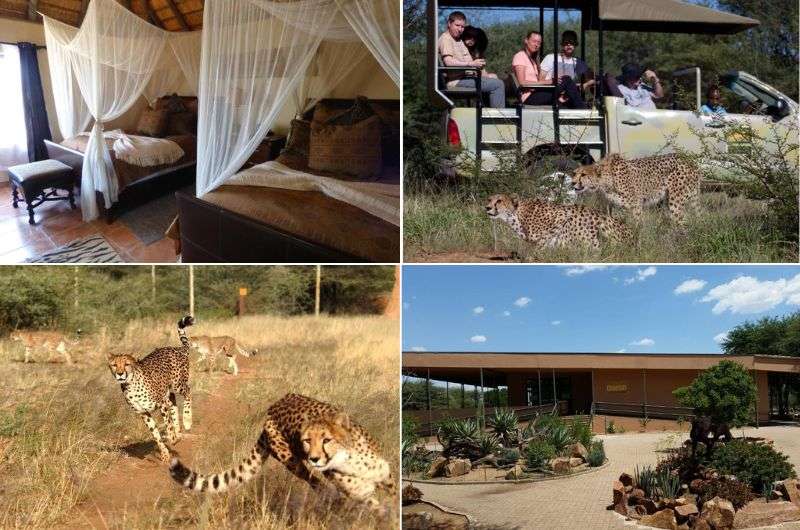
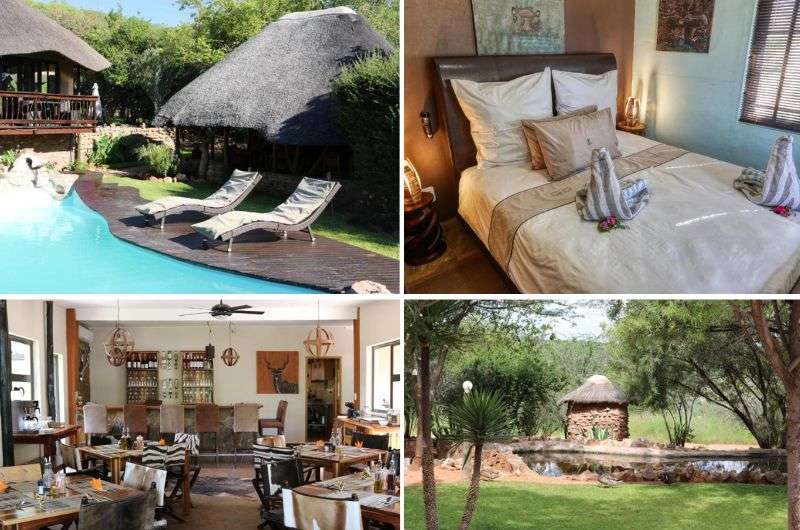
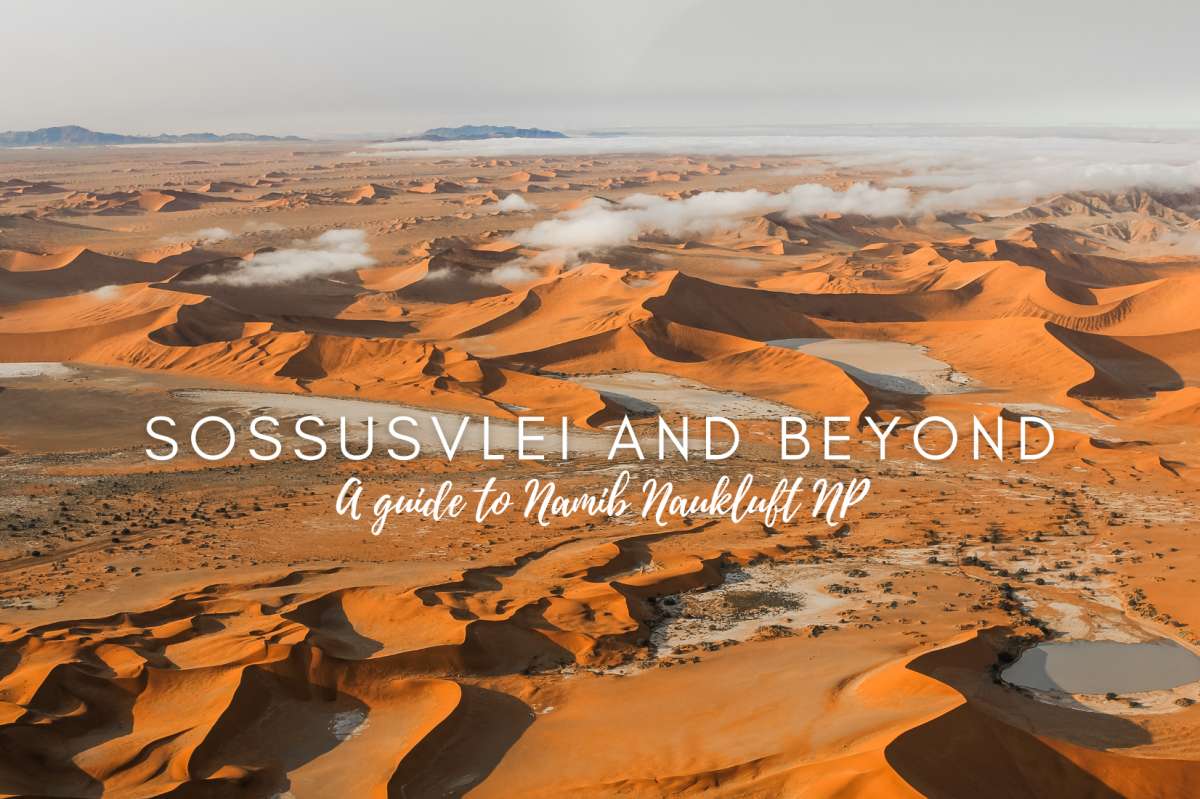
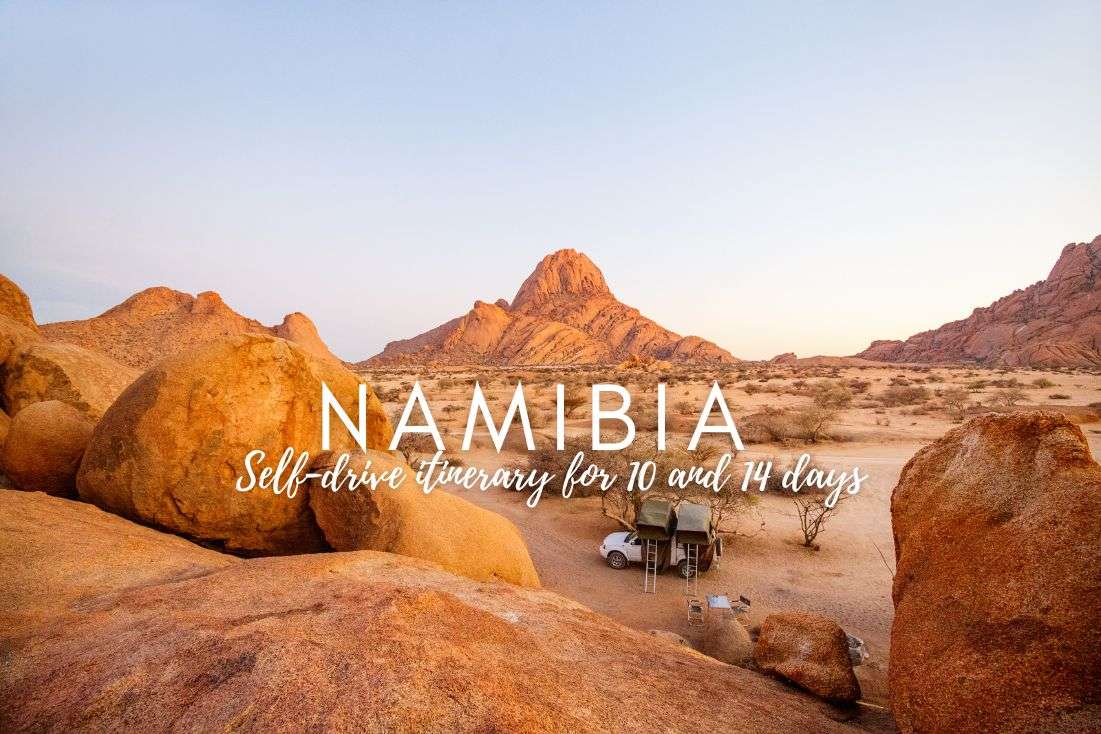
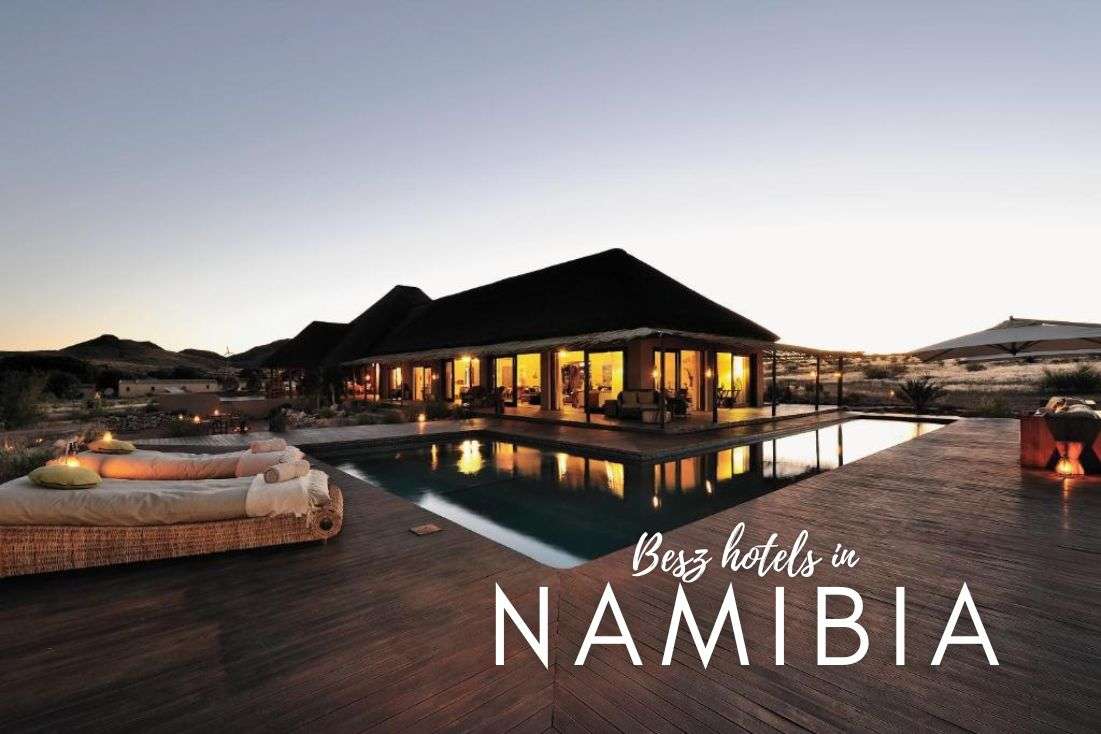




Comments
Thoughts? Give us a shout!